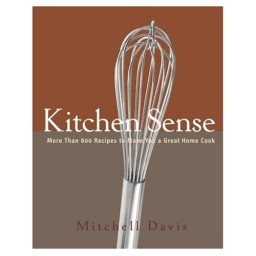
I inherited the love of Chinese food from my mother. One of my earliest memories was eating at a Cantonese American restaurant in Monrovia, a suburb of Los Angeles. This was 1970 and try as they might, decorating correctness hadn’t been seen in Chinese restaurants. The dining room was lacquered red, dotted with Chinese lanterns giving the space a “World of Susie Wong” crimson glow. Spread before the two of us was a hearty Asian spread in stainless steel standing bowls and piled into them were the deliciously fatty food stuff such as roast pork egg foo young, spareribs in black bean sauce, roast pork fried rice, roast pork eggrolls and the omnipresent white rice.
Yep, that roast pork was in everything.
As an incredibly poor college student looking for cheap eats in Manhattan’s Chinatown I discovered “real” Chinese roast pork hanging in storefront windows. It was as if you paddled into Hong Kong but you only walked across Canal Street. The bustling was stronger, headier than other parts of the city and you could tell you entered Chinatown by the smell of hoisin, sesame, soy sauce and food dangling in windows. Char sui drenches windows in rows upon rows, covering the glass like a maroon-colored curtain, although sometimes it’s paired elegantly with a whole tea smoked duck. Smoked duck. Roast pork. Smoked duck. Roast pork. When a customer ordered a strip, a kitchen worker’s hand pushes through, parting the meaty fabric and yanks a strip for a hungry customer. Quickly they slice it, in a rapid machine gun motion and shovel it into one of the Chinese paper containers.
At the time, char siu was cheap, one dollar per order: I would get the roast pork, cold sesame noodles and white rice, just enough to get me through breakfast, lunch and dinner. I needed the carbs to keep me running through New York City streets. Walking from Union Square to Broadway so that I can get to Canal Street and back again. No twisting or turning….straight on through. But a long trek…a hike.
Often it’s made with red tofu paste, red dye and MSG. It doesn’t need it. Using a really cheap cut of lusciously marinated and richly decadent pork, this can easily be served for masses. Home roasting made my house smell of Chinatown in a good way; while eating it will reminded me of being in college, running the streets of Manhattan and discovering myself. Who knew you could get that from a recipe?
2 ½ pounds of boneless pork shoulder
3 tablespoons of soy sauce
1 ½ tablespoons Chinese oyster sauce
1 ½ tablespoons hoisin sauce
2 tablespoons of rice wine
¼ cup of brown sugar
1 tablespoon Chinese five-spice powder
½ teaspoon kosher salt
¼ teaspoon of white pepper
Depending on the size of your pork, cut them into 2 inches wide and approximately 1 inch thick. Place the strips into a baking dish that will hold the meat in an even layer. Combine all the ingredients in a bowl and mix well. Cover the pork with this mixture and marinate overnight.
Heat your oven to 400 degrees and bring the pork to room temperature. Roast for about 30 to 40 minutes basting every 5 – 9 minutes. At this point, it’s done but if you want to achieve that Chinatown look apply some mascara…..kidding….to achieve that roasted, marooned charred edge, place under broiler for about 3 – 4 minutes. It will achieve that beautifully dripping-in-fat appeal…lacquered and deliciously edible. Heat up leftover marinade and serve with the pork.
(Note: I served my roast pork as lettuce wraps with a variety of Asian condiments such as a peanut dipping sauce, alfalfa sprouts, pickled cucumbers and pickled ginger. It could have been served with rice.)





